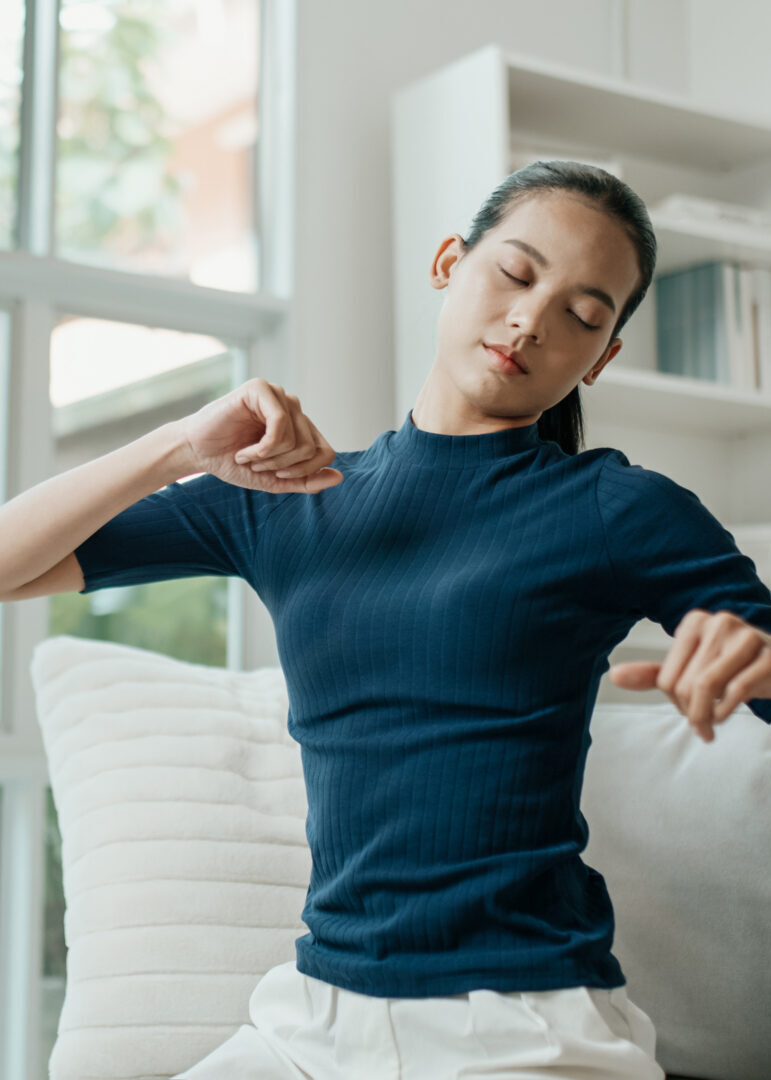
Muscle Relaxation
How can we maintain our physical and mental well-being in the face of modern life’s daily stresses and challenges? Identifying and tackling the primary source of stress is obviously the most effective stress-management strategy. However, no matter how hard we try, we cannot avoid feeling tense and anxious for various reasons from time to time.
When an individual experiences stress and anxiety, the muscles in his/her body would become tense and constricted. Muscle Relaxation helps one to become aware of points of tension in the body, to differentiate between tense and relaxed sensations as well as to learn to relax groups of body muscles systematically.
- Find a quiet and comfortable place where you can sit or lie down
- Close your eyes and focus on the sensations in different parts of your body
- Take deep breaths; inhale and exhale slowly and steadily
- Start by tensing the specified body muscles for about 15 seconds and then relax; repeat for 2 or 3 times. Move on to the next body part slowly and systematically. Notice the variations in your body sensations as you constrict and relax different muscle groups in the following sequence:
- Hold your fists tightly…..open fist…..relax
- Bend your arms…..straighten arms…..relax
- Lift your shoulders…..lower shoulders…..relax
- Bend your head backward….. Head resume normal position …..relax
- Bend your head forward….. Head resume normal position …..relax
- Raise your eyebrows and tense your forehead…..lower your eyebrows…..relax
- Close your eyes tightly…..relax
- Close your lips tightly….. Relax
- Lift your tongue until it touches your palate…..lower your tongue…..relax
- Bend your lower arms, lean shoulders backward and push out your chest…..straighten your arms, let shoulders and chest resume normal position…..relax
- Breathe in and tense up the muscles in your abdomen …..breathe out and relax
- Straighten your legs and bend your feet upward…..resume normal position and relax
- Straighten your legs and point your feet downward …..resume normal position and relax
- Lie back and allow all the muscles in your body to relax for 10 to 15 minutes.
The entire exercise can be completed in about twenty minutes and it is best to practice daily. However, when necessary, you can also choose some movements for partial relaxation.
Regular practice of Muscular Relaxation can help to identify early whether our body is in a state of tension so that adjustments can be made. For beginners, they may not be able to control certain parts of the body freely. But with more practice, they will know how to distinguish the feeling of relaxation and tension, and gradually master the technique of self-relaxation.
In addition to muscle relaxation, placing our attention on different parts of the body’s senses through mindfulness may also help us be more aware of our physical and mental state. You can find a quiet place and follow our videos to practice Mindfulness of Sound and Mindfulness of Sitting Posture.




